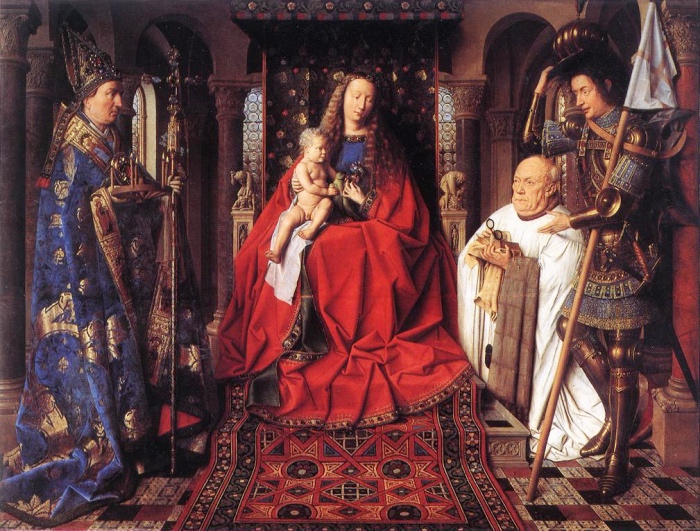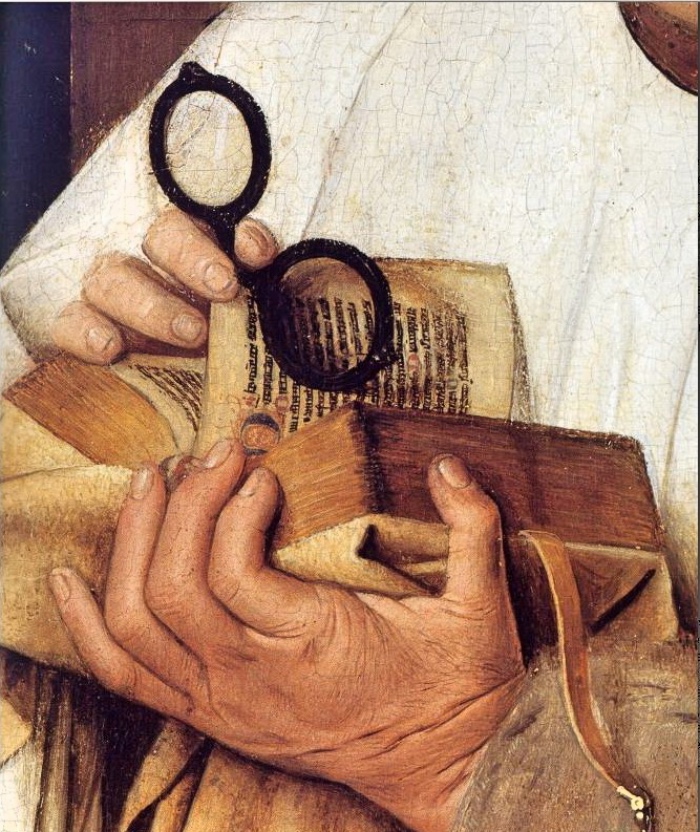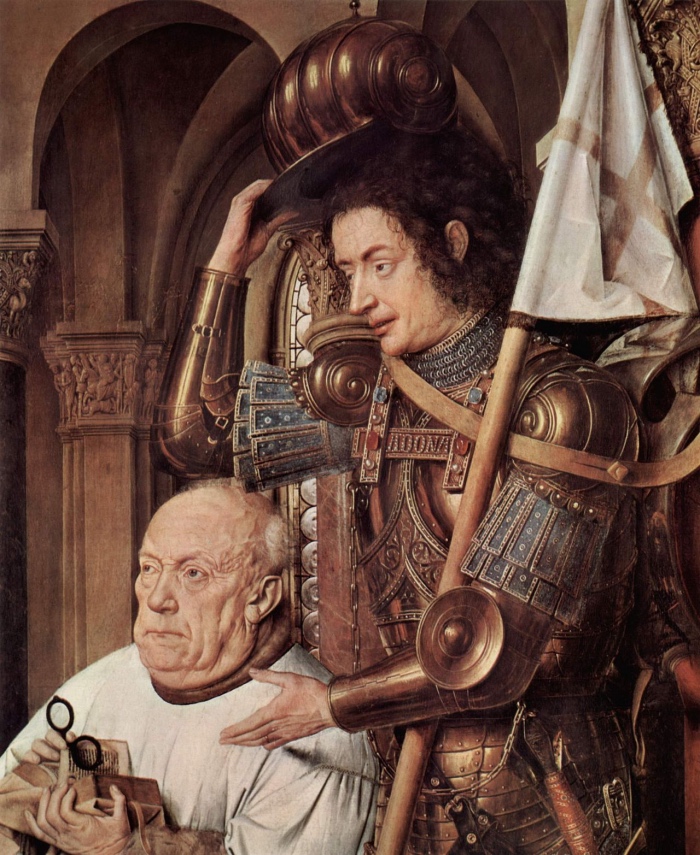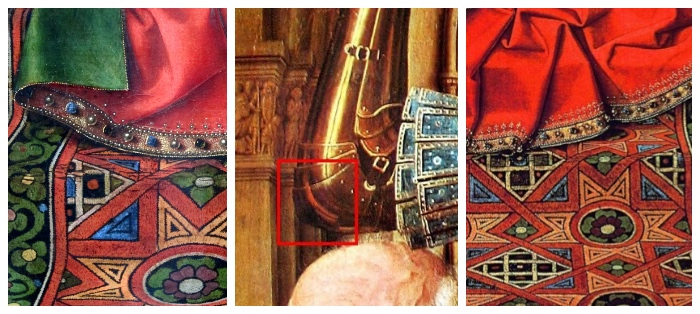
THE VIRGIN AND CHILD WITH CANON VAN DER PAELE BY VAN EYCK: 5 THINGS TO KNOW ABOUT A MASTERPIECE
The Virgin and Child with Canon van der Paele is one of the largest and most famous masterpieces by Jan van Eyck.
In terms of size it is second only to the Adoration of the Mystic Lamb, painted by the artist together with his brother Hubert, but as regards painting technique and description of details it is certainly a masterpiece which can’t be included in any list.
In this post I’ll explain The Virgin and Child with Canon van der Paele by van Eyck in 5 points to make you discover everything about this work.
The Virgin and Child with Canon van der Paele

Virgin and Child with Canon van der Paele – detail
1. WHO COMMISSIONED THE VIRGIN AND CHILD WITH CANON VAN DER PAELE
Jan van Eyck was commissioned to paint the work in 1436 by Canon Van der Paele, who placed the canvas in the chapel of Saint Donatian’s Church in Bruges where he was buried.
According to many art historians this painting would be the earliest example of Sacred Conversation.
2. THE VIRGIN AND CHILD WITH CANON VAN DER PAELE: DESCRIPTION OF THE PAINTING
The Virgin and Child with Canon van der Paele portrays the donor, the Canon, dressed in white while being presented to the Virgin Mary and the Christ Child by two saints: Saint Donatian and Saint George.
In the painting symbols and reality blends. The Christ Child, for example, plays with a parrot, which is the symbol of Annunciation, because its call is similar to the word “Ave”, but each shade of the feathers is painted in a way that suggests that the painter had a real parrot as a model.
READ ALSO – Jan van Eyck’s works: 5 things to know

3. DETAILS OF THE VIRGIN AND CHILD WITH CANON VAN DER PAELE
The feature that makes van Eyck’s paintings some masterpieces is the attention to detail you can fully appreciate when you are in front of his works.
In The Virgin and Child with Canon van der Paele you can admire the details of the elements that make the representation realistic, from wrinkles on Canon van der Paele’s face to decorations of the carpet, everything is highlighted in van Eyck’s painting.
If you observe with close attention the painting, you can see the reflection of Jan van Eyck’s self-portrait in Saint George’s armour, in his helm and in his shield.
4. THE VIRGIN AND CHILD WITH CANON VAN DER PAELE: CURIOUS FACTS
The Virgin and Child with Canon van der Paele decorated the altar which had to house Canon’s tomb, in Saint Donatian’s Church in Bruges.
Italian writer and politician Francesco Guicciardini saw the painting in 1567, when it was still on the altar for which it was painted, while in the mid-18th century the Virgin with Child with Canon van der Paele was located in the sacristy, and then it was moved to Paris in 1794 by Napoleon Bonaparte.
The work returned to Bruges in 1815.
5. WHERE THE VIRGIN AND CHILD WITH CANON VAN DER PAELE IS HOUSED
The painting was painted almost certainly in Bruges, where van Eyck lived and had his studio, and where Canon wanted to place it.
Now Saint Donatian’s Church, which was the city’s ancient cathedral, doesn’t exist anymore, but the Virgin and Child with Canon van der Paele is housed in the Groeninge Museum in Bruges.

READ ALSO – Flemish painting: a tour among the masterpieces of Flanders

